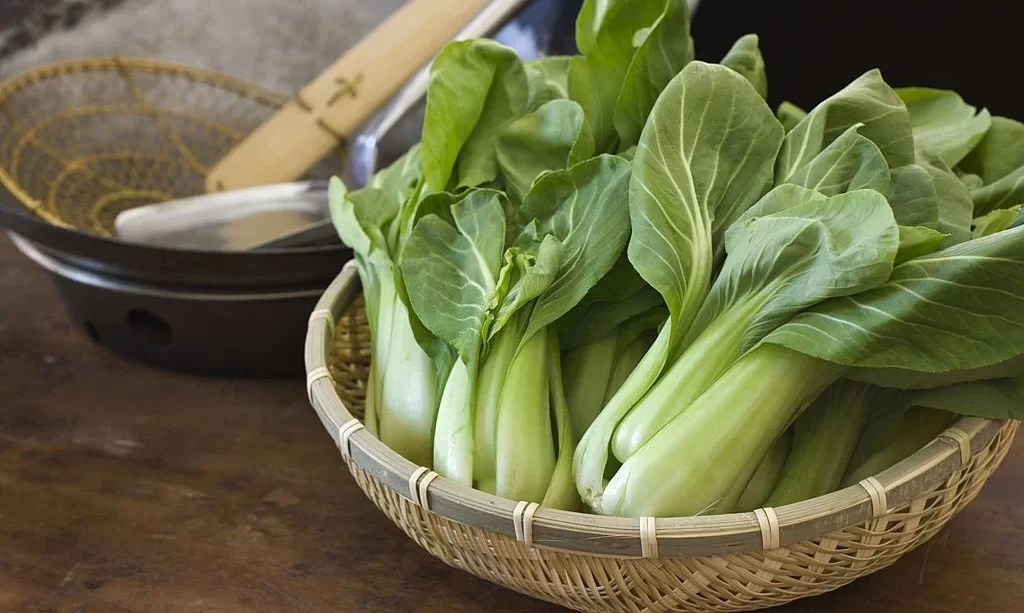Bok choy, with its crisp texture and mild, slightly sweet flavor, is a delightful addition to a variety of dishes. Whether you’re a seasoned cook or just beginning your culinary journey, knowing how to properly store bok choy is essential to maintain its freshness and maximize its use in your kitchen. In this guide, we will explore the art of storing bok choy, from selecting the freshest bunch to cleaning it thoroughly. By following these simple steps, you can ensure that your bok choy remains vibrant and ready to enhance your favorite recipes.
Selecting Fresh Bok Choy
The first step to successful bok choy storage is selecting the freshest bunch at the grocery store or farmer’s market. Here’s what to look for:
- Vibrant Leaves: Choose bok choy with vibrant, dark green leaves. Avoid bunches with yellowing or wilting leaves, as they may not be as fresh.
- Crisp Stems: Examine the stems; they should be firm and not limp or rubbery. Crisp stems indicate freshness.
- No Blemishes: Inspect the leaves for any signs of blemishes or damage. Fresh bok choy should be free from bruises or brown spots.
- Whole Bunch: Ideally, select a whole bunch of bok choy rather than pre-cut or pre-packaged options. Whole bunches tend to stay fresher longer.
By choosing bok choy with these characteristics, you’ll set the stage for successful storage and enjoyable cooking experiences.
Cleaning Bok Choy
Before storing bok choy, it’s crucial to clean it properly to remove any dirt or debris. Here’s how to do it:
- Separate Stalks: Gently separate the individual stalks of bok choy, as they are often tightly packed together.
- Rinse Under Cold Water: Place the separated stalks under cold, running water. Hold each stalk by the base and rinse between the leaves to remove any dirt or grit. Pay particular attention to the base, where soil can accumulate.
- Use a Salad Spinner (Optional): If you have a salad spinner, you can use it to remove excess moisture after rinsing. A quick spin helps ensure that the bok choy is dry, which is essential for proper storage.
- Pat Dry: If you don’t have a salad spinner, use a clean kitchen towel or paper towels to gently pat the bok choy dry. Removing excess moisture helps prevent premature wilting.
Now that your bok choy is clean and dry, you’re ready to store it properly to maintain its crispness and flavor.
- One-handed pump for maximum drying with minimum effort
- Patented brake stops basket immediately with a simple press
- Storage lock holds pump flush with lid for stacking and storing
- Non-skid base keeps the bowl stable during use
- Removable spinner basket works as a colander for rinsing greens
Storing Bok Choy
Proper storage is the key to keeping your bok choy fresh and crisp. Here are two common methods for storing bok choy:
Refrigeration:
- Produce Bag: Place the cleaned and dry bok choy in a produce bag or a loosely sealed plastic bag.
- Moisture Control: Add a paper towel to the bag to absorb excess moisture, which can cause wilting.
- Temperature: Store the bag in the vegetable crisper drawer of your refrigerator, where the temperature is slightly higher than the rest of the fridge. Aim for a temperature between 32°F (0°C) and 40°F (4°C).
- Use Quickly: Bok choy stored this way will remain fresh for up to a week. Use it promptly for the best flavor and texture.
Blanching and Freezing (For Long-Term Storage):
- Blanching: If you want to store bok choy for an extended period, blanching is an option. Boil a pot of water and briefly immerse the bok choy in the boiling water for about 1-2 minutes.
- Cooling: Immediately transfer the blanched bok choy to a bowl of ice water to stop the cooking process.
- Drain and Dry: Drain the bok choy thoroughly and allow it to air dry or use a clean kitchen towel.
- Packaging: Place the blanched and dried bok choy in airtight containers or freezer bags, removing as much air as possible before sealing.
- Freezing: Store in the freezer, where it will remain good for up to 6-8 months.
- Zero Waste and Eco-friendly — One more step closer to a zero waste lifestyle and cuts plastic bag use in a convenient way; Get 15 pcs reusable and durable bags, great addition to your goal of being plastic free and helping the environment,and each mesh bags has the potential to eliminate up to 1000 plastic bags over it’s lifetime.
- Safety and Lightweight — BPA free and 100% food contact safe, with the highest standards of quality, safely hold all your fresh produce. Made of ultra fine yet strong mesh polyester, the mesh bag is super lightweight that it won’t add weight to your produce.
- Scan Through Easily — Unlike most non-transparent mesh bags from other brands, our produce bags is nearly transparent so you can easily see through the bag to know what’s inside;bar-codes will scan right in the bag so that the cashier will be able to see the item numbers and also make your checkout faster.
- Convenient and Easy to Clean — Easy to open and close with drawstring toggle closure; Colorful drawstrings and tags help to keep you more organized;Easy to clean, just rinse it with water or wash them with the rest of your laundry, then they are good to go again, no problem!
- Multiple Sizes Meet All You Need — 3 sizes makes them very versatile,yellow is small 12″×8″, green is medium 12″×14″, and red is large 12″×17″, just take one from the bundle easily by its color and you have the correct bag to use; Great not only for veggies and fruit, but also great for toys, bulk grain or fragile produce.
Using Stored Bok Choy
When you’re ready to use your stored bok choy, keep these tips in mind:
- Thawing (For Frozen Bok Choy): If you’ve frozen bok choy, there’s no need to thaw it before cooking. You can add it directly to your dishes.
- Cooking: Bok choy is a versatile ingredient that can be used in stir-fries, soups, salads, and as a side dish. Try it in various recipes to enjoy its unique flavor and crisp texture.
- Experiment: Don’t be afraid to get creative with your bok choy. It pairs well with a wide range of flavors, so feel free to experiment with different seasonings and cooking techniques.
Conclusion
By following these simple steps for selecting, cleaning, and storing bok choy, you can enjoy the benefits of this nutritious and flavorful vegetable for an extended period. Proper storage ensures that your bok choy remains fresh and ready to enhance your culinary creations, whether you choose to use it in stir-fries, salads, soups, or as a delightful side dish. So, make the most of your bok choy by storing it properly and savoring its crispness in your favorite recipes.






